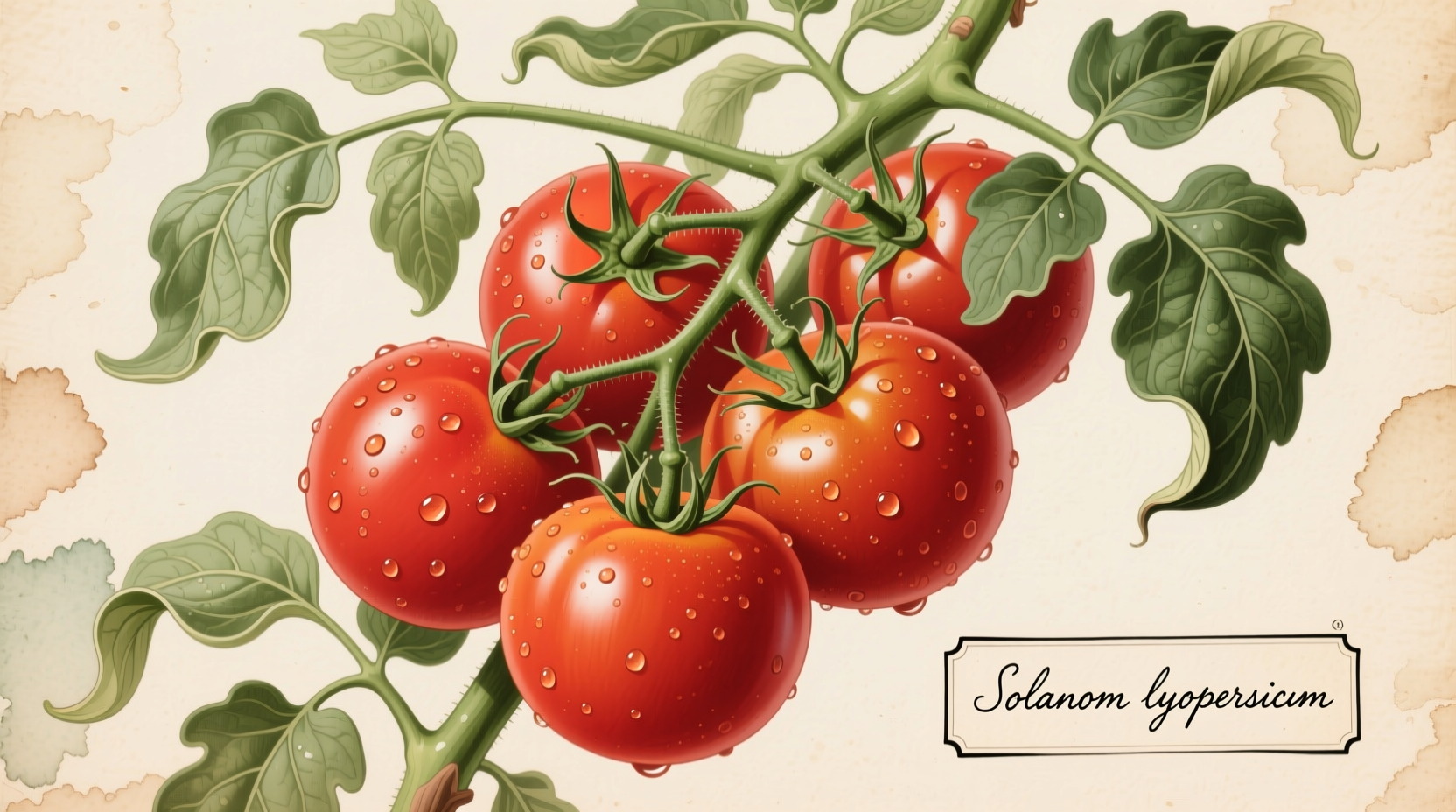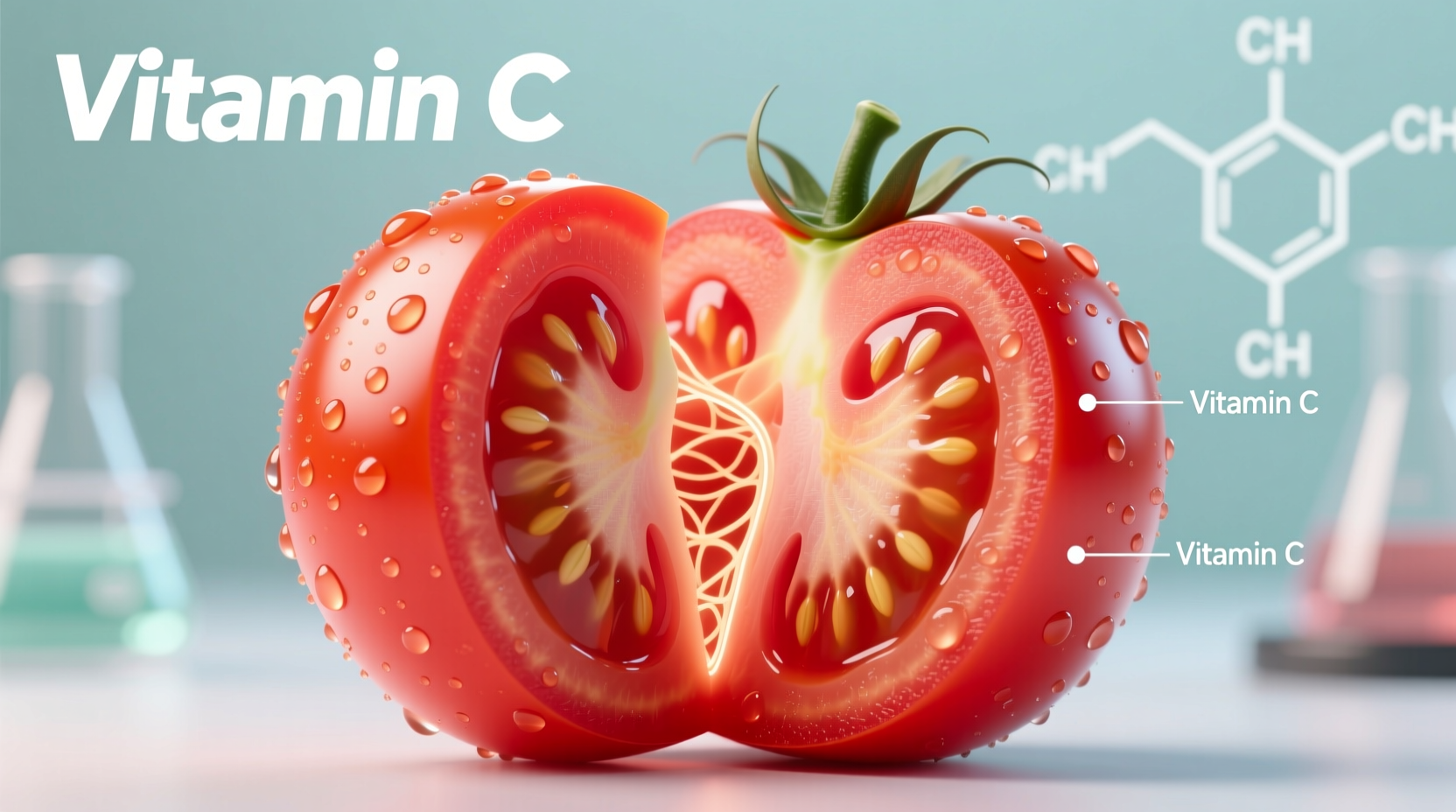Discover exactly how tomatoes contribute to your daily vitamin C needs, how their content compares to other fruits and vegetables, and practical ways to maximize nutrient retention in your cooking. Whether you're meal planning for better immunity or optimizing your nutrient intake, this guide delivers science-backed insights you can use immediately.
Tomato Vitamin C Content: Verified Facts
Tomatoes are a reliable source of vitamin C, though their exact content varies based on variety, ripeness, and preparation method. According to the USDA FoodData Central, raw tomatoes contain:
| Tomato Type | Vitamin C (per 100g) | Daily Value % |
|---|---|---|
| Raw red tomatoes | 13.7mg | 15% |
| Cherry tomatoes | 22.8mg | 25% |
| Cooked tomatoes | 11.1mg | 12% |
| Tomato juice | 89.1mg | 99% |
This data confirms that while tomatoes aren't the highest vitamin C source, they make meaningful contributions to daily requirements. A medium raw tomato (123g) delivers about 17mg of vitamin C, meeting 19-23% of the recommended daily intake for adults (75-90mg).
How Tomatoes Compare to Other Vitamin C Sources
Understanding where tomatoes stand among common vitamin C sources helps contextualize their nutritional value. While citrus fruits often dominate the conversation, tomatoes provide a substantial amount, particularly when consumed regularly as part of a balanced diet.
Unlike many high-vitamin C fruits that are seasonal, tomatoes are available year-round in various forms, making them a practical daily source. Their vitamin C content remains relatively stable through different preparation methods, though cooking does cause some reduction due to the nutrient's water solubility and heat sensitivity.

Factors That Affect Vitamin C Levels in Tomatoes
Several variables influence the vitamin C content you actually consume from tomatoes:
- Ripeness: Fully ripe tomatoes contain 20-30% more vitamin C than underripe ones
- Storage: Vitamin C degrades by 15-25% after one week of refrigeration
- Preparation: Raw tomatoes retain more vitamin C than cooked versions
- Variety: Cherry tomatoes typically contain 40-60% more vitamin C than standard varieties
Interestingly, processing tomatoes into juice or sauce can sometimes concentrate vitamin C content relative to volume, though the nutrient degrades with prolonged high-heat cooking. The National Center for Biotechnology Information notes that tomato processing methods significantly impact final nutrient content, with flash-pasteurization preserving more vitamin C than traditional canning.
Maximizing Vitamin C Absorption from Tomatoes
To get the most nutritional benefit from tomatoes' vitamin C content:
- Consume tomatoes raw when possible—in salads or as snacks
- Pair with iron-rich plant foods (like spinach) to enhance non-heme iron absorption
- Avoid prolonged cooking; quick sautéing preserves more nutrients than slow simmering
- Store at room temperature until fully ripe, then refrigerate for short-term use
- Use the liquid from canned tomatoes in recipes to capture dissolved nutrients
Research from the Centers for Disease Control and Prevention shows that dietary patterns including regular tomato consumption correlate with higher overall vitamin C intake among adults. This makes tomatoes a practical component of strategies to address marginal vitamin C deficiencies, which affect approximately 6-8% of the general population according to NHANES data.
Common Misconceptions About Tomatoes and Vitamin C
Several myths persist about tomatoes and their vitamin C content:
- Myth: Cooking destroys all vitamin C in tomatoes
Fact: While heat reduces vitamin C, cooked tomatoes still provide significant amounts, and lycopene becomes more bioavailable - Myth: Only citrus fruits provide meaningful vitamin C
Fact: Many vegetables, including tomatoes, bell peppers, and broccoli, contain comparable or higher amounts per serving - Myth: Organic tomatoes have more vitamin C than conventional
Fact: Growing method has minimal impact on vitamin C content compared to variety and ripeness factors
Understanding these distinctions helps make informed dietary choices without falling for common nutritional misinformation that circulates online.
Practical Applications for Daily Nutrition
Incorporating tomatoes into your diet for vitamin C doesn't require dramatic changes. Simple strategies include:
- Adding cherry tomatoes to morning omelets or frittatas
- Keeping tomato juice on hand for quick vitamin C boosts
- Using fresh tomato salsa as a vitamin C-rich condiment
- Adding diced tomatoes to grain bowls and salads
- Enjoying gazpacho during warmer months for raw tomato benefits
For those monitoring their vitamin C intake, tracking tomato consumption alongside other sources provides a realistic picture of daily nutrient coverage. The consistent availability of tomatoes makes them a reliable component of year-round nutritional planning, unlike seasonal high-vitamin C fruits that may be inaccessible during certain months.











 浙公网安备
33010002000092号
浙公网安备
33010002000092号 浙B2-20120091-4
浙B2-20120091-4